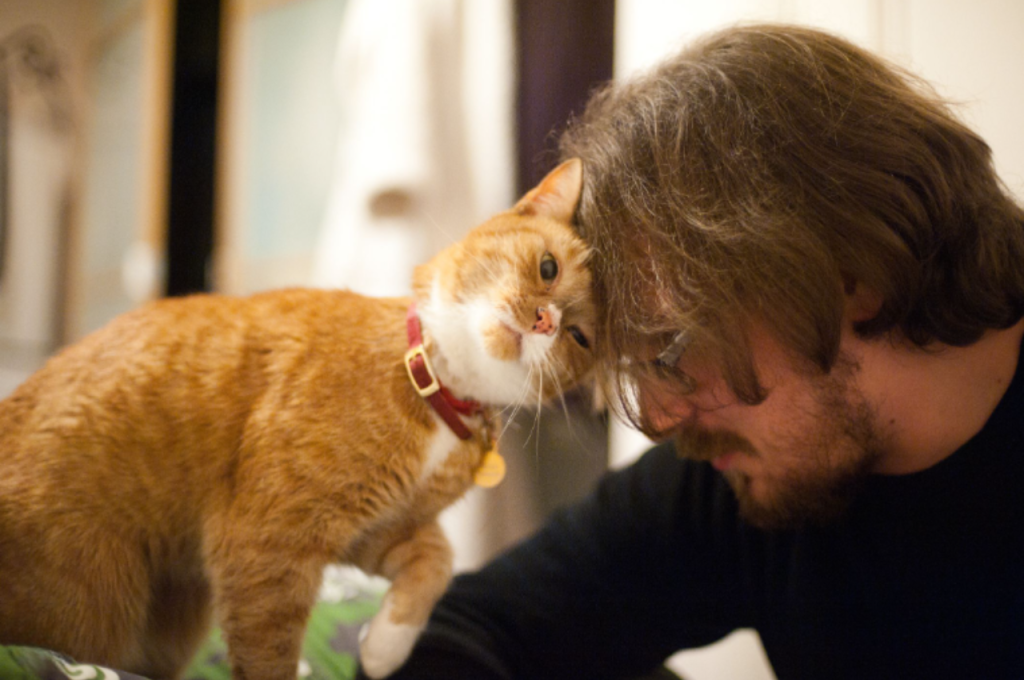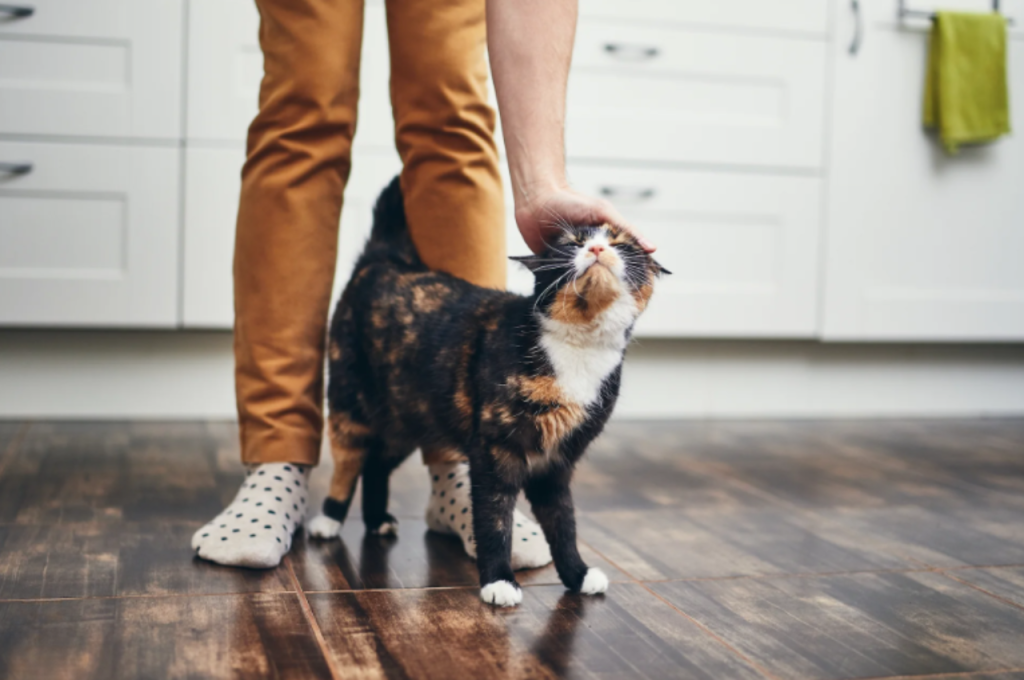Cats do not feel romantic love. They have a different type of affection towards their owners and fellow cats.
Cats are known for their mysterious and independent nature, which often leaves us wondering about their emotions and feelings. While cats may show affection towards their owners in various ways, such as rubbing against their legs or purring, it is important to note that this affection is not the same as romantic love.
Unlike humans or even some other animals, cats do not experience the same kind of emotional attachment or deep bonding associated with romantic love. Instead, they form strong social bonds with their owners and fellow cats based on a combination of familiarity, care, and companionship. We will explore the unique ways in which cats express their affection and discuss the differences between their love and romantic love.
The Nature of Feline Emotions
Cats are fascinating creatures known for their independent and sometimes mysterious nature. While they may not express emotions in the same way humans do, cats undoubtedly experience a range of feelings that influence their behavior and interactions with their environment. Understanding the nature of feline emotions can deepen your bond with your cat and help you provide better care and support.

Instinctual Behavior vs. Emotional Attachment
Cats demonstrate a unique mix of instinctual behaviors and emotional connections, which shape their interactions with humans and other animals.
Research On Feline Emotions
Research indicates that cats undergo intricate emotional experiences, akin to those observed in humans.
Understanding Romantic Love
Romantic love is a complex and powerful emotion that has been explored and celebrated by poets, writers, and artists for centuries. It is often depicted as an intense and passionate connection between two individuals, characterized by strong feelings of affection, desire, and attachment.
Characteristics of Romantic Love
Romantic love can be identified by several key characteristics:
- Intense emotions: Romantic love often evokes feelings of happiness, excitement, and joy.
- Attraction: It involves a strong physical and emotional attraction towards another person.
- Desire for intimacy: Romantic love includes a longing for closeness and a desire for emotional and physical intimacy with the beloved.
- Chemical reactions: Research has shown that romantic love involves the release of specific chemicals in the brain, such as dopamine and oxytocin, which contribute to feelings of pleasure and bonding.
How Humans Express Romantic Love
Humans express romantic love in various ways, which can include:
- Verbal expressions: Through words, individuals often express their love verbally, conveying affection, admiration, and commitment.
- Physical affection: Humans demonstrate their romantic love through physical gestures such as holding hands, hugging, kissing, and intimate touch.
- Gifts and acts of service: Offering gifts and performing acts of kindness are common expressions of romantic love, symbolizing thoughtfulness and care.
- Quality time: Spending time together and engaging in shared activities is a cherished way of expressing romantic love.
- Affirmation and support: Offering words of encouragement, showing understanding, and providing emotional support are all ways in which humans express their romantic love.
Exploring Cats’ Affectionate Behaviors
While cats may not express affection in the same overt ways as dogs or humans, they have their unique ways of showing love and attachment. Exploring cats’ affectionate behaviors can help us better understand and appreciate the depth of their emotional lives.
Physical Signs of Affection
Cats exhibit various physical signs to express their affection towards their owners. Purring, kneading, and head rubbing are common signs of physical affection from cats. These actions demonstrate their affection and bonding with their human companions. Through purring, cats convey contentment and comfort, creating a sense of relaxation for both the cat and its owner. Consistent kneading and head rubbing indicate a strong attachment and liking towards their human counterpart.
Emotional Bonding With Humans
When they form an emotional connection with their human companions, cats display behaviors such as following their owners around, greeting them at the door, and cuddling with them. These actions signify their desire for closeness and companionship, as well as their affectionate relationship with their human family. Cats are capable of forming deep emotional bonds and can demonstrate their affection in various subtle ways.
The Science Behind Feline Attachments
Understanding the emotional world of our beloved feline friends has been a topic of curiosity and fascination for centuries. While some may argue that cats are creatures of independence and aloofness, recent studies have shed light on the intricate emotional attachments that cats form with their human companions and even with other animals. It’s fascinating to explore the science behind feline attachments and to delve into the neurobiological studies that give us insight into their emotional responses.

Neurobiological Studies On Cat Emotions
Cat emotions have been a subject of interest for neurobiological studies, revealing the way cats form attachments and exhibit emotions. These studies have demonstrated that cats have similar brain structures to humans and show neurological responses to emotional stimuli, suggesting they are capable of experiencing a range of emotions, including attachment and bonding.
Comparison With Human Emotional Responses
When comparing cat emotional responses with humans, it’s evident that cats display behaviors consistent with attachment and affection, similar to the way humans form emotional connections. Studies have shown that cats release oxytocin, often referred to as the “love hormone,” when interacting with their human companions, further supporting the notion of feline emotional attachment.
Challenges in Interpreting Cats’ Emotions
Deciphering the complexities of a feline’s emotions proves challenging, especially when it comes to determining if cats experience romantic love. Understanding their emotions requires careful observation and interpretation to unravel the mysteries of their hearts.
Understanding cats’ emotions can be quite challenging due to their complex and enigmatic nature. Cats are independent creatures that often mask their feelings, making it difficult for humans to determine whether they truly experience romantic love or not.
Anthropomorphism in Understanding Cats
One of the challenges in interpreting cats’ emotions is the tendency to anthropomorphize them. Humans often project their feelings and experiences onto their feline companions, assuming they feel love and affection in the same way we do. However, it’s important to remember that cats have different ways of perceiving and expressing emotions.
While cats may exhibit behaviors that seem similar to human displays of affection, such as purring or rubbing against their owners, it doesn’t necessarily mean they experience romantic love in the same sense that humans do.
Reading Subtle Feline Cues
To understand a cat’s emotions, it’s vital to pay attention to their subtle cues and body language. Cats communicate through a variety of signals, including facial expressions, tail movements, and vocalizations.
For example, a cat’s slow blinking can indicate a level of trust and contentment, while a raised tail with a slight curve at the end can be a sign of friendliness. By observing and interpreting these cues, we can gain a better understanding of a cat’s emotional state.
It’s important to note, however, that interpreting a cat’s emotions based solely on their behavior can be subjective. Each cat is unique, and their personalities and experiences can influence how they express their emotions.
Therefore, while we may never fully know if cats experience romantic love, it doesn’t diminish the special bond we share with our feline friends. Appreciating and respecting their unique emotional experiences can help deepen our relationships with these intriguing creatures.
Factors Influencing Cats’ Emotional Connections
Cats are complex creatures with rich emotional lives, and their ability to form deep and meaningful connections with humans and other animals is influenced by a variety of factors. While each cat is unique, several key factors can influence the strength and nature of their emotional connections:
Environment and Socialization
Cats’ emotional bonds are shaped by their environment and social interactions during the early stages of life.
Genetics and Individual Personality Traits
Genetic predispositions and unique personality traits play a role in how cats form emotional connections.
Case Studies of Remarkable Feline Relationships
Through a series of case studies, we delve into the depths of these extraordinary bonds, shedding light on the unique connections forged between cats and their companions.
Interspecies Friendships
Cats can form strong bonds with other species, such as dogs or rabbits.
– Cats often develop playful relationships with animals outside their species.
– Some cats display affectionate behavior towards animals they see as friends.
Long-term Bonds Between Cats
Cats are known for forming lasting connections with their feline companions.
– Cats that grow up together may develop a deep bond that lasts a lifetime.
– Older cats sometimes exhibit protective behavior towards younger cats.
Overall, feline relationships can be complex and meaningful, proving that cats are capable of experiencing strong emotions, including love.
Practical Tips for Strengthening the Human-cat Bond
Romantic love is a complex emotion, but can humans and cats share a similar level of affection? While cats may not experience romantic love as humans do, they are capable of forming strong bonds with their human companions. Strengthening the human-cat bond involves creating a positive environment and building trust and affection. Here are some practical tips for enhancing this unique relationship.

Creating A Positive Environment
Creating a positive environment for your cat is essential for fostering a strong bond. Make sure to provide a comfortable and stimulating space for your cat, with cozy sleeping spots, interactive toys, and scratching posts. Additionally, set aside regular playtime and grooming sessions to keep your feline friend happy and content.
Building Trust and Affection
Building trust and affection is key to deepening the bond with your cat. Spend quality time with your cat each day, engaging in activities they enjoy, such as interactive play and gentle petting. Understanding your cat’s body language and respecting their boundaries will also help to strengthen the trust they have in you.
Conclusion
To sum up, while cats may not experience romantic love in the way humans do, their unique forms of affection and bonding are undeniable. From grooming rituals to cuddling and purring, cats express their love in subtle ways.
Understanding and appreciating these feline displays of affection can deepen our bond with our feline companions. So, next time you see your cat rubbing against your legs, remember that it’s their way of saying “I love you.”
